Did you know? In the US, cleaning companies are not required to disclose all of their ingredients (only active ingredients or “ingredients of known concern”). And the US Government doesn’t test cleaning products and doesn’t mandate that companies test them either. This all leads to a lot of confusion about cleaning products. Today, we’re going to uncover 7 cleaning product ingredients that I choose to avoid and also 7 product swaps.
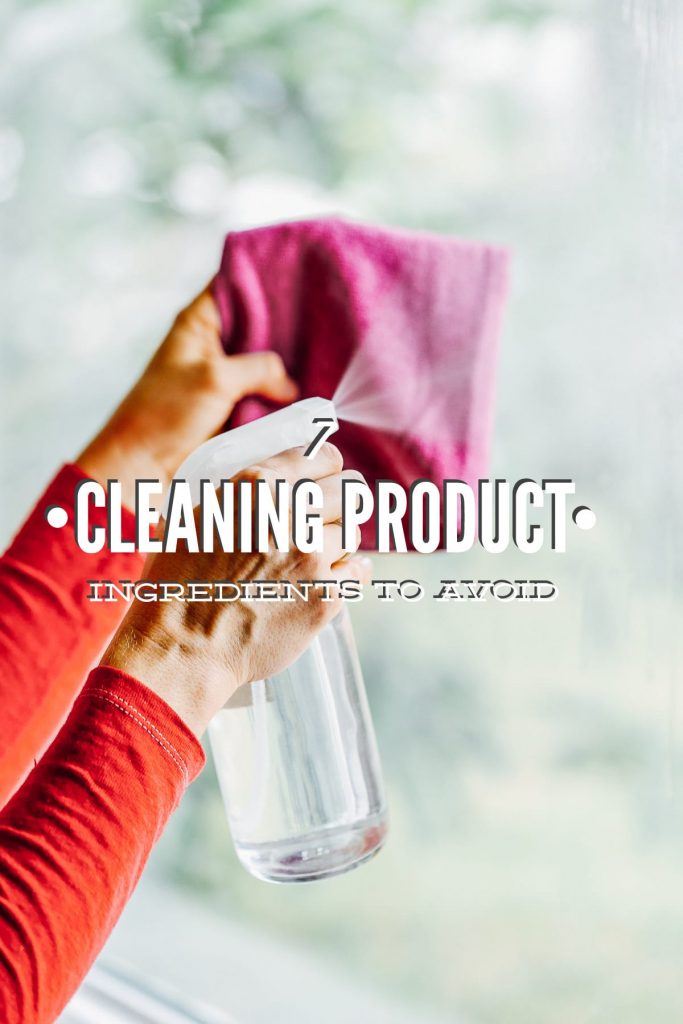
Want to Save This Article?
Enter your email & I’ll send it straight to your inbox. And you’ll get new recipes & tips each week.
The solution may seem simple: just grab the “natural” or “green” cleaners at the store. Problem solved, right?! Well, those terms have NO regulation either. So just because a label may claim a bunch of trendy green marketing words, doesn’t mean those words accurately represent what you’re getting or the full story of the other ingredients used to make the cleaner.
I’m not trying to scare anyone by sharing this. The last thing we all need in 2021 is more fear. Instead, I believe that knowledge is power and so, today, I want to share some knowledge with you about cleaning product ingredients. From this knowledge, you can do your own research and make informed choices based on your research, and then decide what’s best for you and your family.
With this knowledge, you can make informed choices about what and how to clean your home.
When we know better, we do better.
7 Cleaning Product Ingredients to Avoid
Here’s a list of a few cleaning product ingredients that personally concern me. Again, I encourage you do your own research on this as well. For me, I take the stance that a small amount of these ingredients may not be all that harmful (as companies claim), but when you consider how many products we use in a day (or week or month), we aren’t using a trace amount of these ingredients in our homes. This can lead to burdening our systems with these ingredients and the cumulative effect of using so many potentially-toxic chemicals can wreak havoc on our health.
1. Fragrance
Made with multiple lab-generated chemicals that are blended together to create a particular scent. (Chemicals aren’t bad, but we need to make sure that the chemicals used are safe which is why all ingredients should be disclosed–which is not usually the case with fragrance.) Lots of different ingredients may be hiding under this vague ingredient name (including phthalates which we’ll talk about later). Since this word is a “trade secret” companies are not required to disclose the exact chemicals or formulations used to make a particular fragrance. When looking at a cleaning product, look for an ingredient list and the word “fragrance” (if there is an ingredient list). If you see fragrance on the list, without any disclosure (i.e. a blend of essential oils), it’s time to move on. Check out this post to see just how far companies will go to not disclose their fragrance ingredients.
2. 2-Butoxyethanol
This ingredient belongs to a category of solvents known as glycol ethers (also in this category: ethylene glycol mono-butyl ether, EGBE). Commonly found in window cleaner, spot cleaners, and all-purpose cleaners and degreasers. Ethylene glycol may have dangerous consequences, like kidney failure, if ingested. Considering this, I don’t want to breathe in or come into contact with this product on a regular basis.
3. Ammonia
If you’ve ever used ammonia, I’m sure the smell has been forever burned into your senses. Ammonia is used to clean glass, sinks, and polish fixtures. It can be extremely irritating for those with asthma and lung issues.
4. Ethanolamines (AKA: Monoethanolamine (MEA), Diethanolamine (DEA), and/or Triethanolamine (TEA)
Used in all-purpose cleaners, furniture polish, detergent, and foaming products. May cause skin and eye irritation, along with liver and kidney damage at high doses.
5. Chlorine Bleach
Used as a bleaching ingredient, mildew remover, toilet bowl cleaner, and more. Bleach can be extremely irritating for both the lungs and eyes.
6. Phenols
Used in cleaning products to help cover odors. Used in all-purpose cleaners, detergents, and disinfectants. Contact with phenols can cause blisters, burns, and even severe skin damage in high concentrations.
7. Phthalates
For many years, I believed that the only way to tell if something was clean was to observe a “fresh, clean” scent. I fell hard for this marketing lie! Because of this, for many years, air freshener was regularly used in our home. According to the National Research Defense Council, “The federal government does not currently test air fresheners for safety or require manufacturers to meet any specific safety standards.”
The Defense Council tested 14 brands of air fresheners and found that 12 of the products contained phthalates, a man-made chemical that can be used in plastics and fragranced cleaning and cosmetic products. Some forms are believed to disrupt hormones (listen to this podcast episode about hormones and detoxing), cause reproductive health issues, be carcinogenic, and may be linked to asthma. Air fresheners aren’t the only product that may contain the P word. The following are just a few of the home products that may also contain phthalates: air freshener, laundry detergent, fabric softener, shampoo, hair spray, dish soap, deodorant, nail polish, plastic toys, car-care products, various cleaning products.
It would be great if we could just flip over a cleaning product and look for the P word, but it’s not that easy. Many cleaning companies don’t share a full list of ingredients on a package or use very vague terms to describe this ingredient (i.e. phthalates may be one of many ingredients used to make the vague “fragrance” found on an ingredient list).
7 Product Swaps You Can Make Right Now
At this point, you may be wondering, “Kristin, thanks for the list, but how do I apply this to my life?” The good news is that you don’t need to memorize the list above or live in fear. The list above is simply for reference. Instead, this is the part I suggest focusing on, as this is where the change happens…
First, pull out the cleaning products you currently use and take a look at the ingredients on your go-to cleaners (the ones you use frequently). If there isn’t a list on the package, search online for the product and try to find a list of ingredients. Look for any of the 7 ingredients mentioned above. You can also use the EWG site, a watchdog group, to look up individual ingredients or search for a product and find out how it rates.
Second, make some simple cleaning product swaps. Here are 7 product swaps that will make a big difference.
- Use essential oils instead of air fresheners. I like to add essential oils to homemade cleaning products and also run a diffuser in our home (add a few drops of an essential oil).
- Use beeswax candles. You can even make your own (I love these taper candles or slow-cooker jar candles) or buy 100% beeswax candles online.
- Avoid laundry detergents with added fragrance. Here are my favorite options.
- Choose glass over plastic, as plastic can contain phthalates. One place to start is with your food storage containers and lunchbox gear.
- Ditch the bleach. Make a bleach alternative for soaking clothes and towels, use a vinegar all-purpose cleaner to clean surfaces, use vinegar to remove mold, try this scrub cleaner for sinks and tubs, and this toilet bowl cleaner.
- Avoid ammonia based cleaners. An easy place to start is to make your own glass cleaner or use an all-purpose vinegar cleaner on glass surfaces.
- Make your own all-purpose cleaner. This product can be used to clean so many surfaces in your home. Try this vinegar cleaner or this castile soap cleaner or use a non-toxic store-bought option.
How to Make the Switch to Non-Toxic Cleaning Products Podcast
I can’t think of a better person to chat with about non-toxic cleaning and navigating the cleaning aisle than the co-founder of Branch Basics, Allison. What I love about Branch Basics is their commitment to education that goes beyond selling a cleaning product. That’s why I asked Allison to join me for this podcast chat.

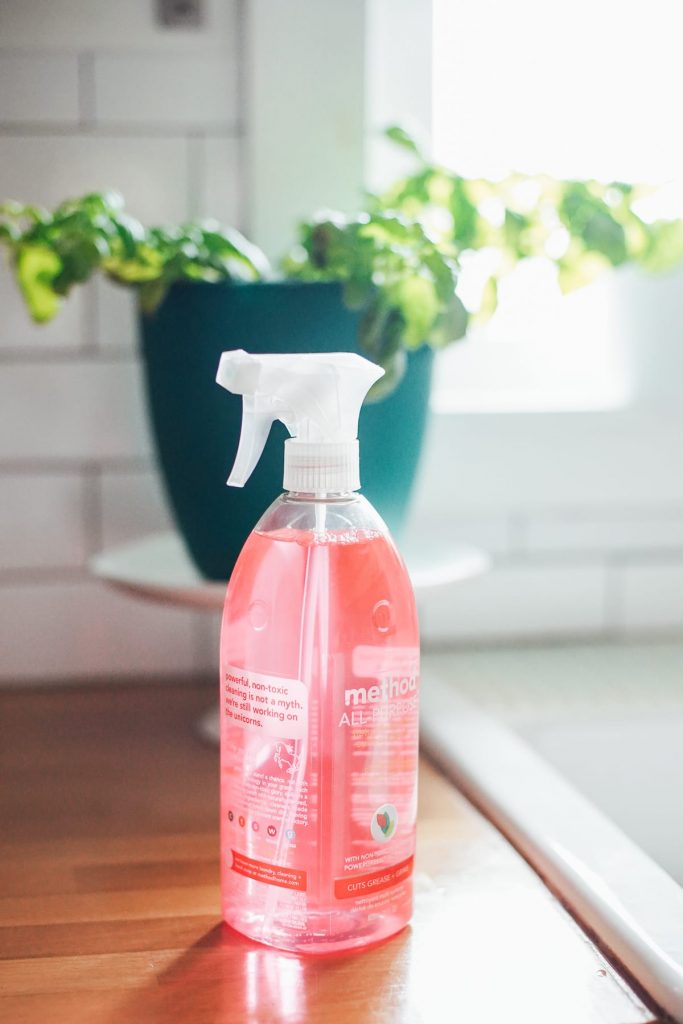
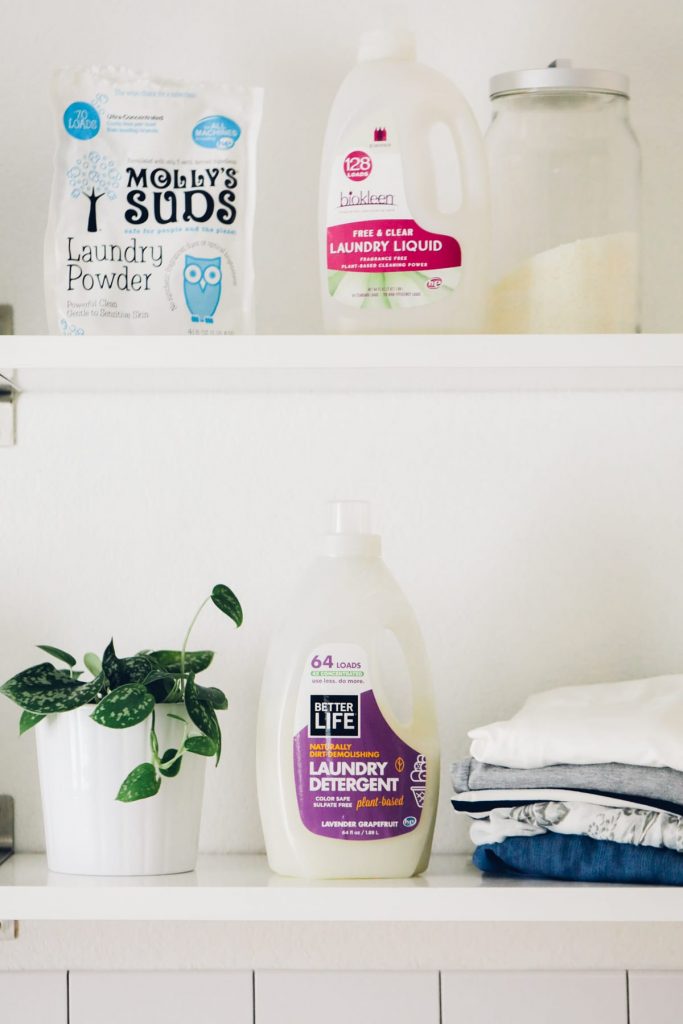
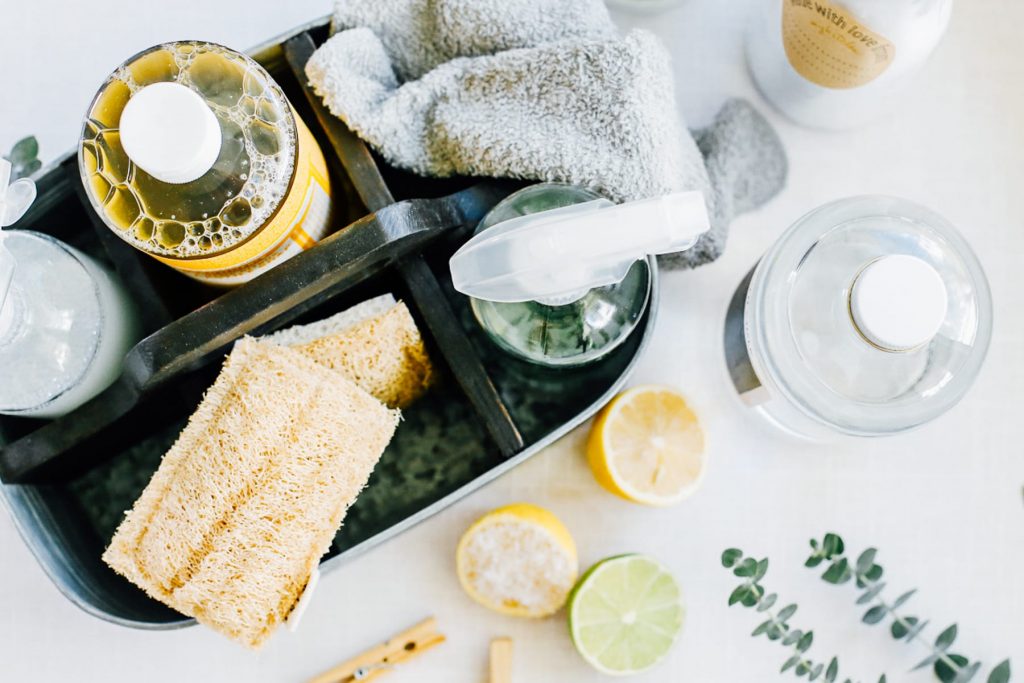
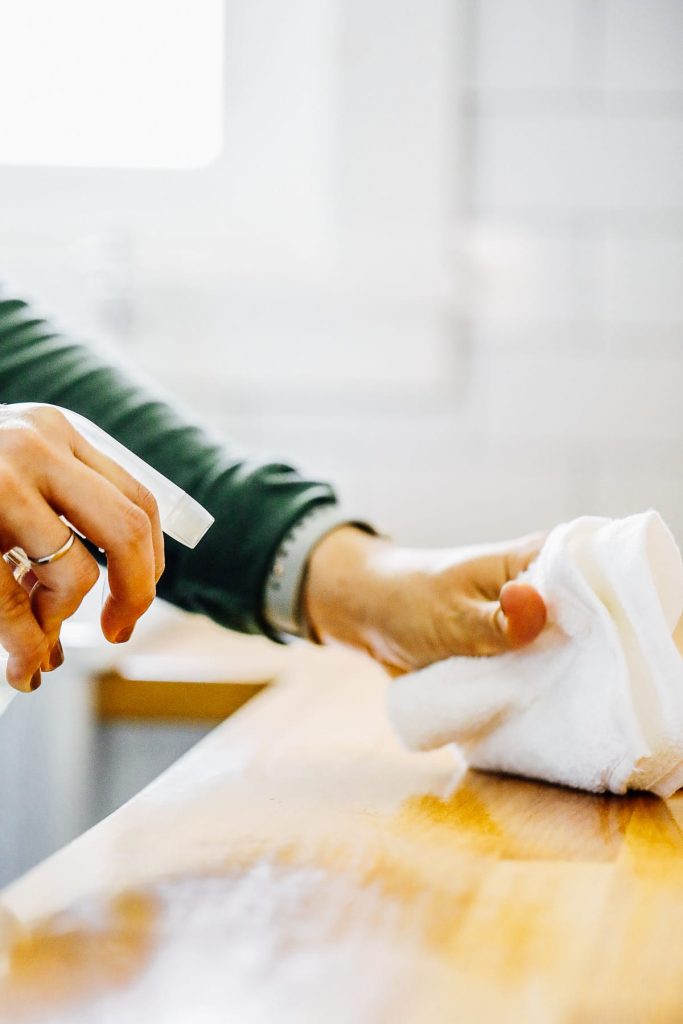

Thanks for the information regarding the 7 ingredients.
I personally have began making my own NATURAL recipes in the past 8 months for absolutely everything, my pets also.
What I found interesting in today’s challenge is, I have never searched these ingredients you mention, so when I read the affects this was disappointing they are legal for use.
Hey Tracey, That’s awesome! I know, it’s crazy how so many potentially harmful ingredients are found in common household cleaners.